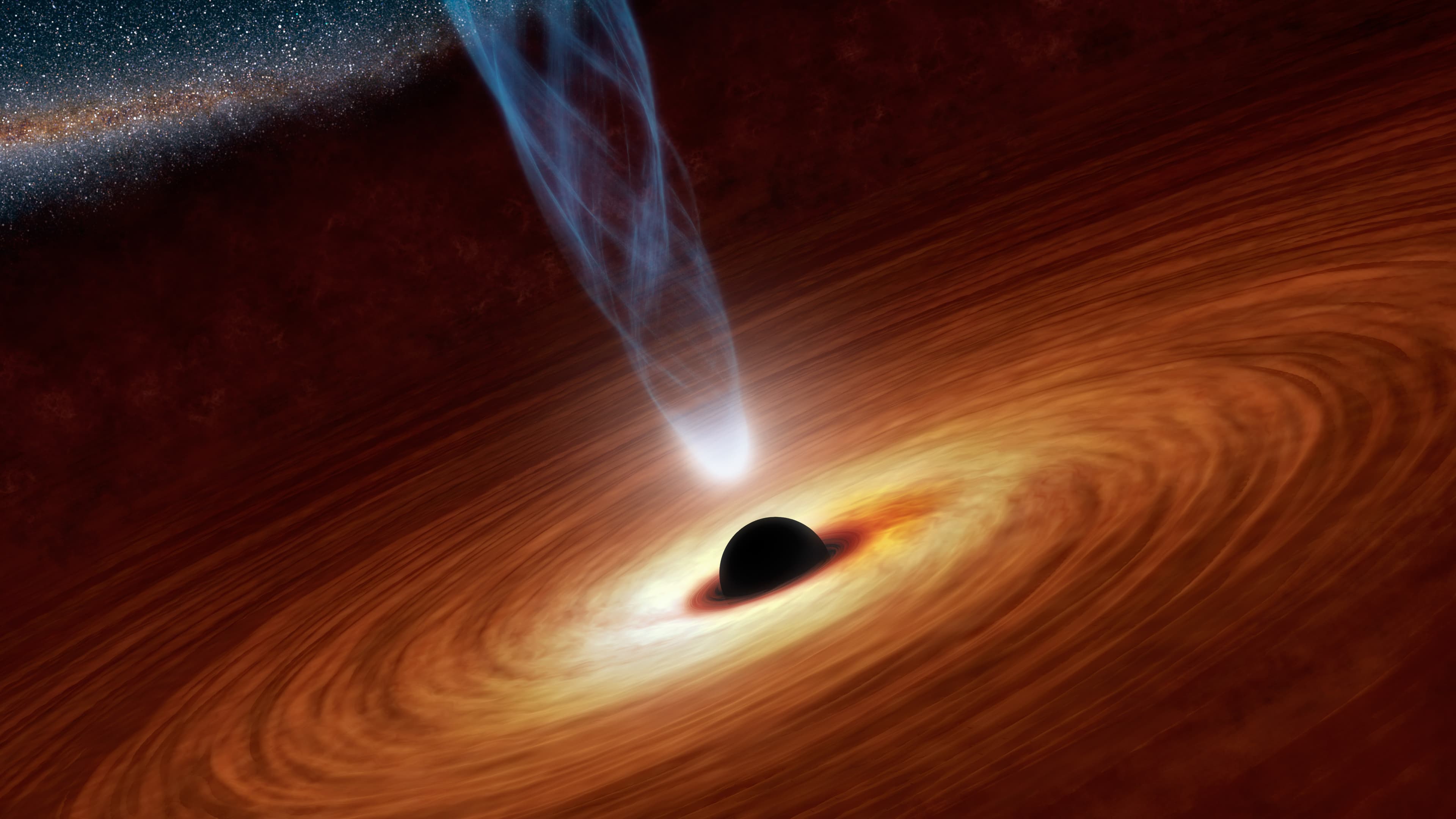Black holes are incredibly fascinating. They represent the unknown, the dangerous, the terrifyingly majestic. They are the modern version of the void, the abyss, the bottomless pit. Most sci-fi gets black holes right, but poetic license ignores the facts at times, and takes over to accommodate the needs of the story.
A black hole is a simple thing really. It is an object so dense that its escape velocity (the velocity necessary to break free from the gravitational pull of said object) is greater than the speed of light. Now let’s add a bit more complexity to that. The region where you can barely escape the death-pull of the Black Hole is called the event horizon. Since light cannot escape, you cannot observe beyond that point. No peeping inside. That’s due to the Cosmic Censorship Conjecture. We can only probe the inside with the use of mathematics.
The matter present in the star before its transformation will collapse into a singularity, a point of infinite density. Well, not always a point. In a rotating black hole, the singularity has a curious property: it is not a point but a disk. The sides are still a singularity but if you follow the metric vertically through the disk you end up in a brand new space-time continuum. This has led people to believe that black holes can lead to the formation of other universes or to “white holes” in ours.
Planets orbiting black holes are quite popular in recent media (Doctor Who and Interstellar among many), and while we are finding exoplanets left and right, we are yet to find one orbiting a black hole. The likelihood of finding a planet orbiting a black hole is very low. Black holes form after a massive enough star goes supernova. It releases a gargantuan amount of energy and the outer layers are blown into a high energy plasma wind. If we were one astronomical unit (the sun-earth distance) from a supernova, the energy that would reach us would be equivalent to exploding a billion atomic bombs on our face.
Although the probability is low. it’s not zero. Pulsars are created in supernova explosions as well (albeit less powerful). We have found planets orbiting pulsars, completely unphased by the deadly radiation shone on them by their once friendly sun. So, if planets can survive supernovae, it is possible that there are planets around black holes out there. However, detecting them will be very difficult. Planetary hunters study the light of the stars to detect either gravitational (for close enough planets) or flux abnormalities (when a planet passes in front of its star, the star is less luminous). They both require a precise measurement of the starlight. So the problem using this technique for black holes is clear.
Thought experiment.
The year is 2078 and our gravitational wave observatory has detected a black hole with planets around it. Every orbit larger than 1.5 times the distance of the event horizon (technically called the schwarzschild radius) is stable. What would it be like to walk on its surface?
The time dilation would be defined as follow:
If the sun were to instantaneously turn into a black hole without the consequent destruction of the Earth, its radius would be about 3 kilometres. 150 million kilometres away, the Earth will continue to move unfazed. The time dilation we experience is about 0.999999985. So every 115 days and a bit we would gain one second. This isn’t really crazy physics stuff.
Let’s make it more interesting. Let’s move Sagittarius A* to the location of the Sun. Sagittarius A* is the supermassive black hole at the centre of the Milky Way. 1 AU (Astronomical Unit) from it, we would gain 7 seconds every 100 seconds. Unfortunately, the Earth’s orbit wouldn’t be stable anymore, and it would lead us to an untimely death: the gravity is so strong around a black hole that even solid objects are stretched towards it in a process which has the hilarious name ‘spaghettification’.
An increment of a week per year is good, but science fiction challenges us with extreme scenarios, so how close would you have to be to have an effect similar to what was shown in ‘Interstellar’? Let’s pick the biggest supermassive black hole known to us: S50014+81. Its mass is over 40 billion times the mass of the Sun. The Schwarzschild Radius of this black hole is 118 billion kilometres (24 times the distance from the Sun to Pluto). So at what distance would you need to be from the event horizon that 1 hour would be equivalent to 7 years on Earth? You would need to stay 10.6 meters away from it. If you manage to survive being roasted by gamma radiation and x-rays and being stretched by gravity for just one second, to an external observer your torment would appear to last for over 18 hours.
Sci-fi captures the spirit of black holes: they are mostly gentle giants, but they’re also the scariest things in the universe.

